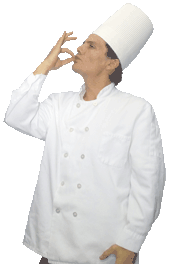At WiseGEEK, we're committed to delivering accurate, trustworthy information. Our expert-authored content is rigorously fact-checked and sourced from credible authorities. Discover how we uphold the highest standards in providing you with reliable knowledge.
What is a Cottage Loaf?
If you’re in England, you’ll note different shapes and styles of bread. One of these is the popular cottage loaf. With a little imagination, you might be able to see that the cottage loaf resembles a round cottage, with a little “roof” on top. This type of bread is called formed or molded bread, and consists of two rounds, a large round on the bottom and a smaller round on the top. The design for the loaf likely originated from Rome, and migrated to England along the roads the Romans built. Today it’s considered English to the core, and few traces of its history and connection to ancient Rome remain.
A cottage loaf is normally made from simple white or wheat bread recipes. Some vary and use brioche dough or a few other types. One thing most recipes stress is that the bread dough not be too heavy. If it is, the upper round can sink into the bottom round and resemble more of an abandoned shack than a prim and neat cottage. The roof, or upper round should be constructed with care, and is about a third to a half smaller than the bottom round.

Another important step in making the cottage loaf is to make sure the two rounds stay together. There are a few recommendations for keeping the upper layer from lifting off the bottom one when the loaf is baked. Some suggest inserting a thumb into the top of the upper round and pushing downward through the bottom layer. Other recipes more practically recommend a wooden spoon handle or dowel. Unless you’re making a tiny cottage loaf or a bun resembling the larger loaf, the wooden spoon is probably the best idea.
When you follow this step, dough from the top loaf will be pushed into the bottom layer, securing the two rounds together. Another suggestion is to add a small amount of egg wash to the bottom of the top round to add a bit of extra stickiness between rounds.
Though a larger, family size cottage loaf tends to be more traditional, you can also make small cottage loaf buns for individual servings. These can be a terrific addition to meals, and their attractive shape certainly adds style to your dinner. If you’re making a truly British meal that would go nicely with bread, supplying a cottage loaf, or cottage buns is a great way to retain authenticity.
AS FEATURED ON:
AS FEATURED ON:










Discussion Comments
I have never made a cottage loaf bread, but have had the opportunity to eat some of this delicious bread.
When we were visiting England, we saw this kind of bread almost every place we went. It is hard to resist eating this bread with its unique shape.
Even though I don't think it really tasted much different from other bread, the shape is what I loved about it.
I never bake bread so wonder how hard it would be to make something like this. Whenever I hear of cottage loaf bread, I always associate it with my trip to England.
Post your comments